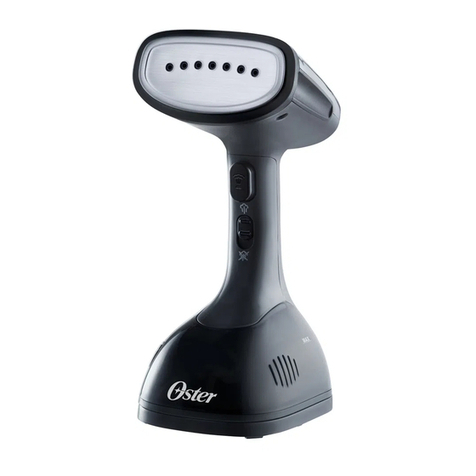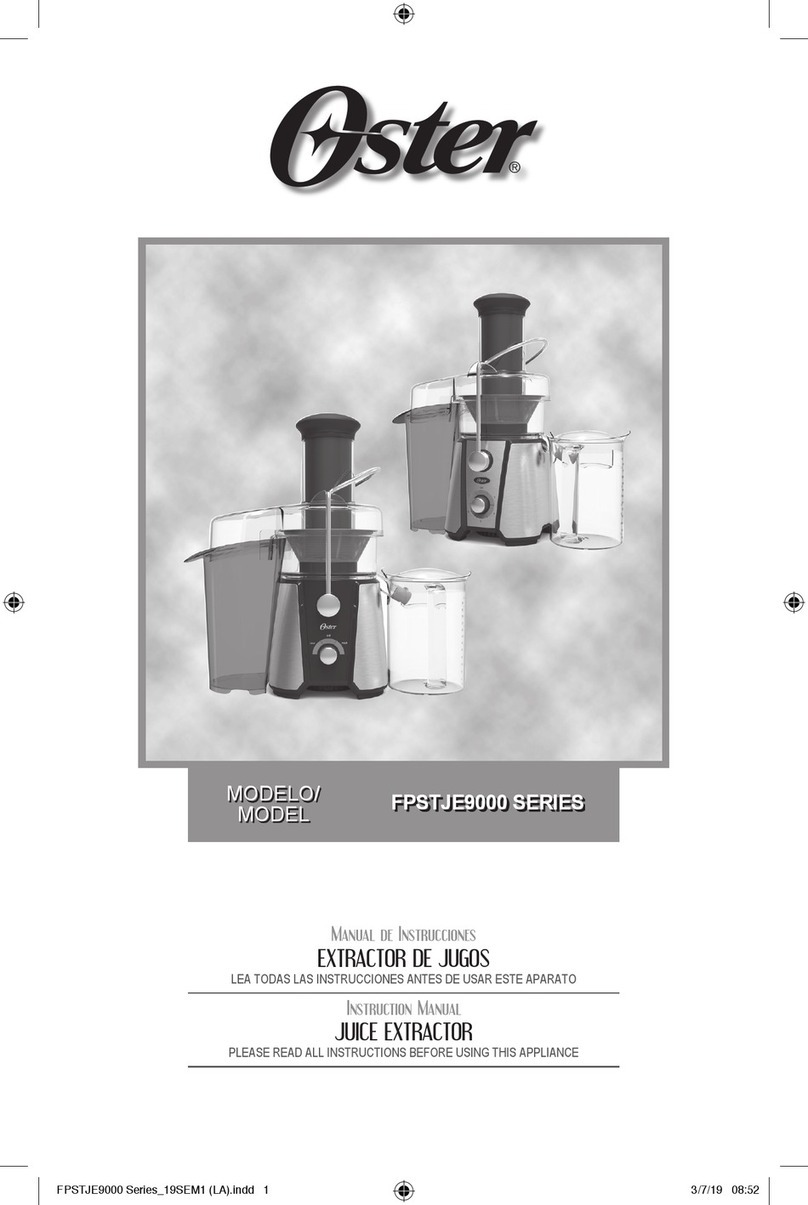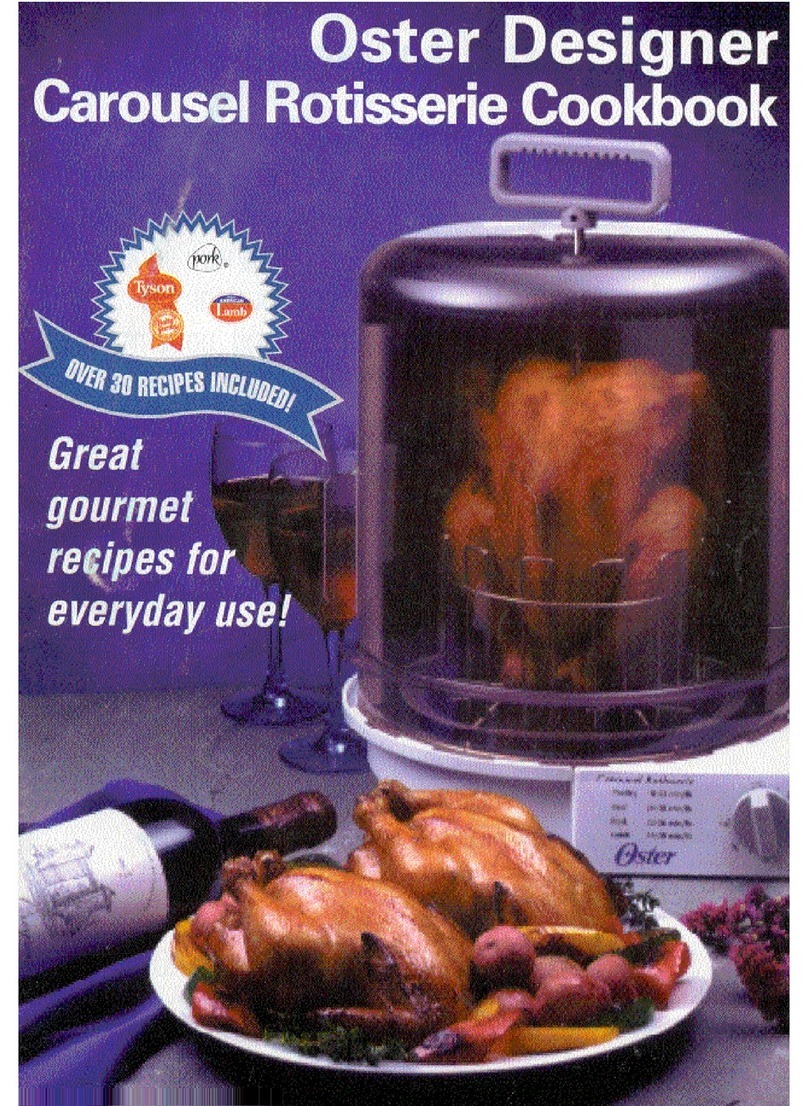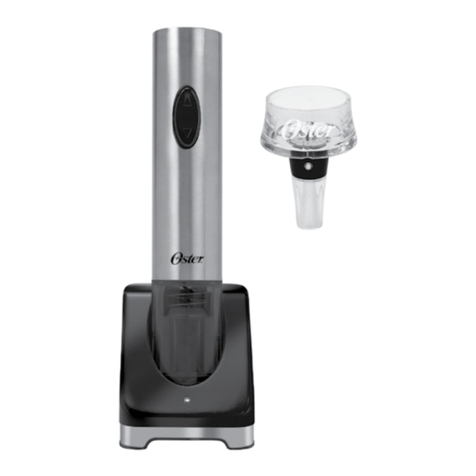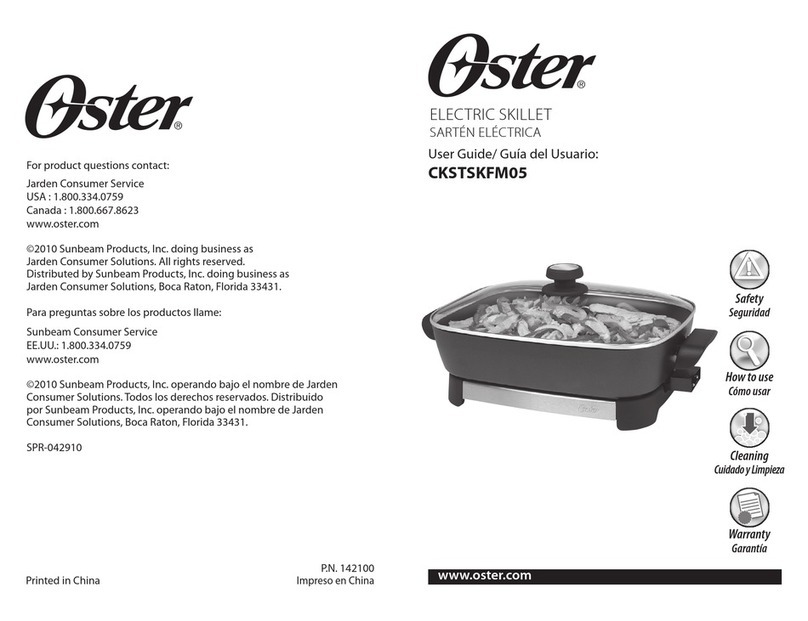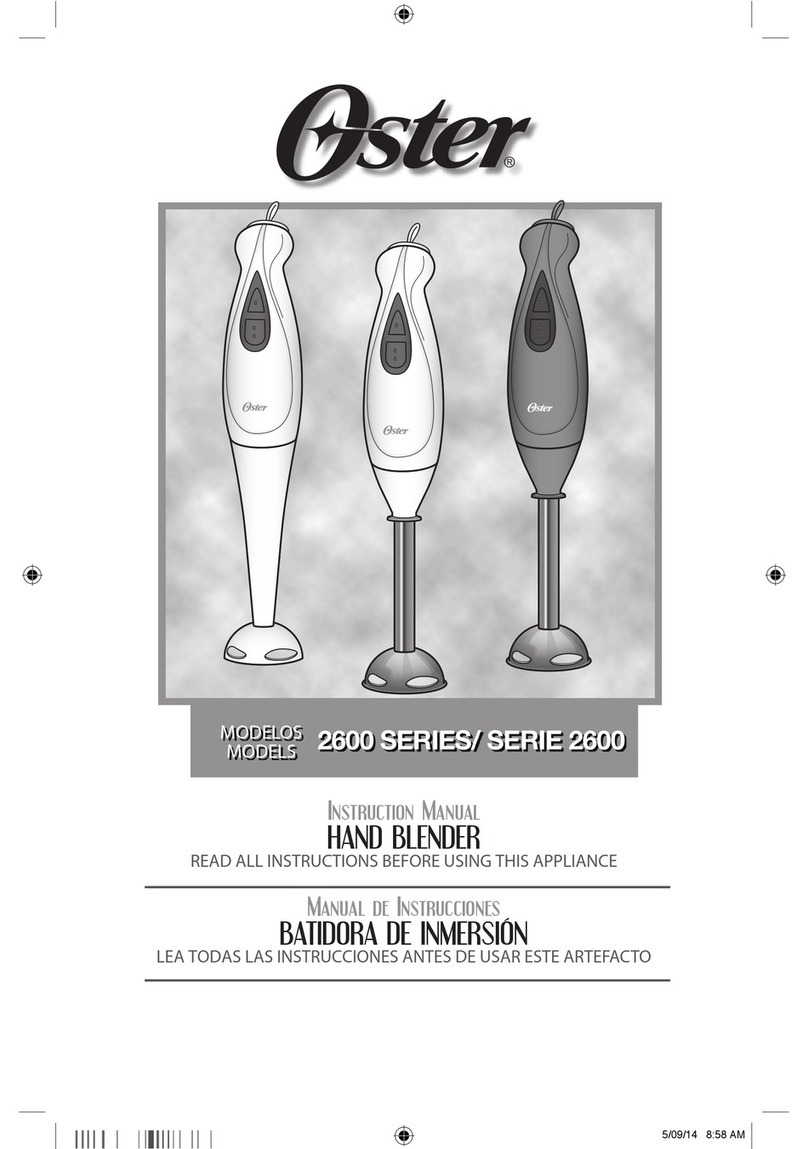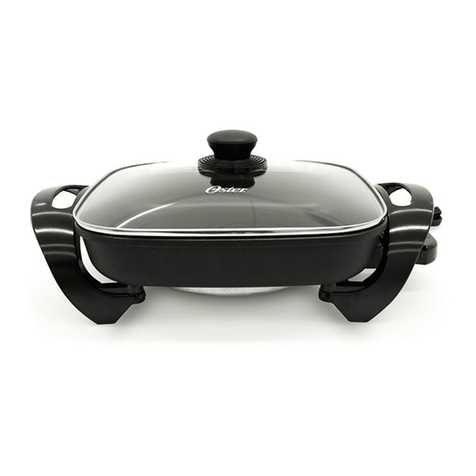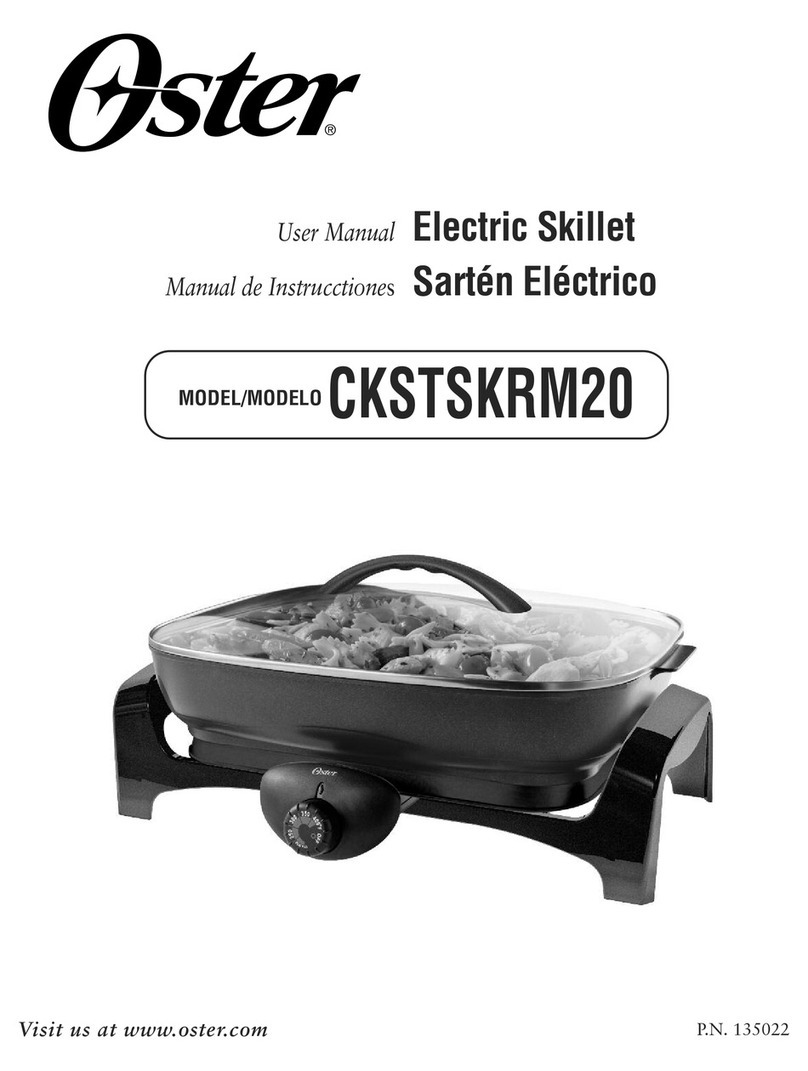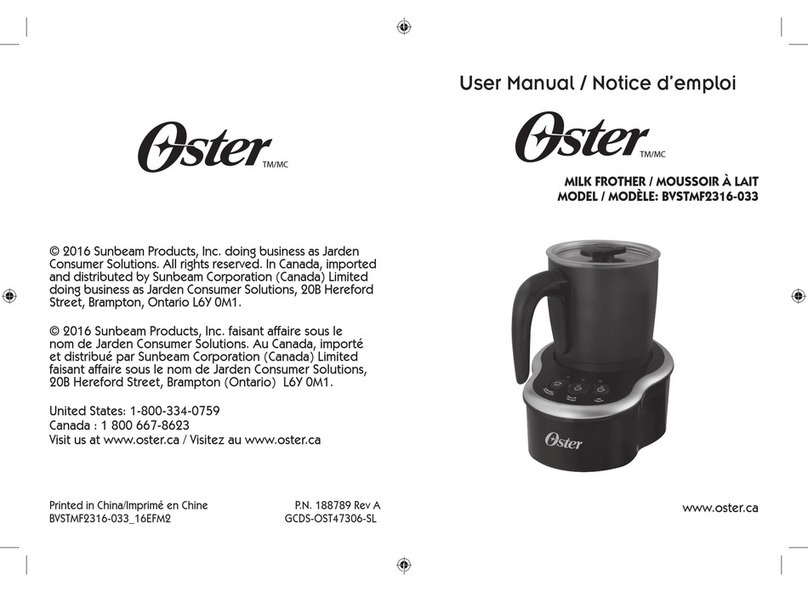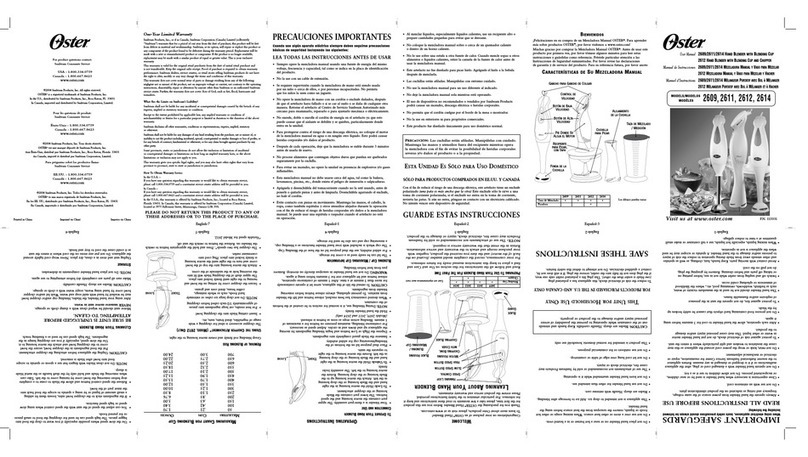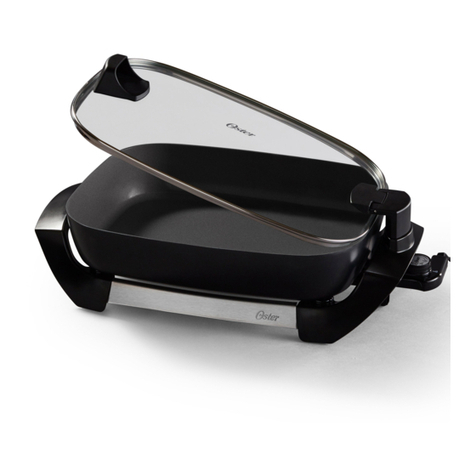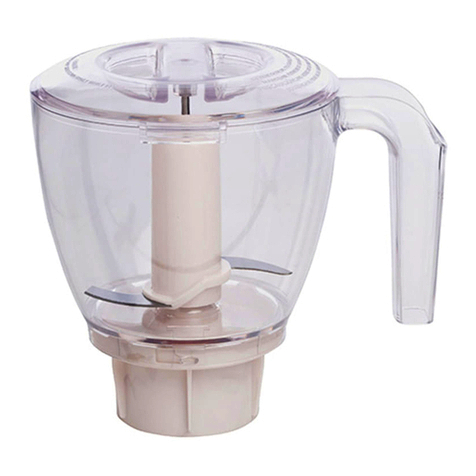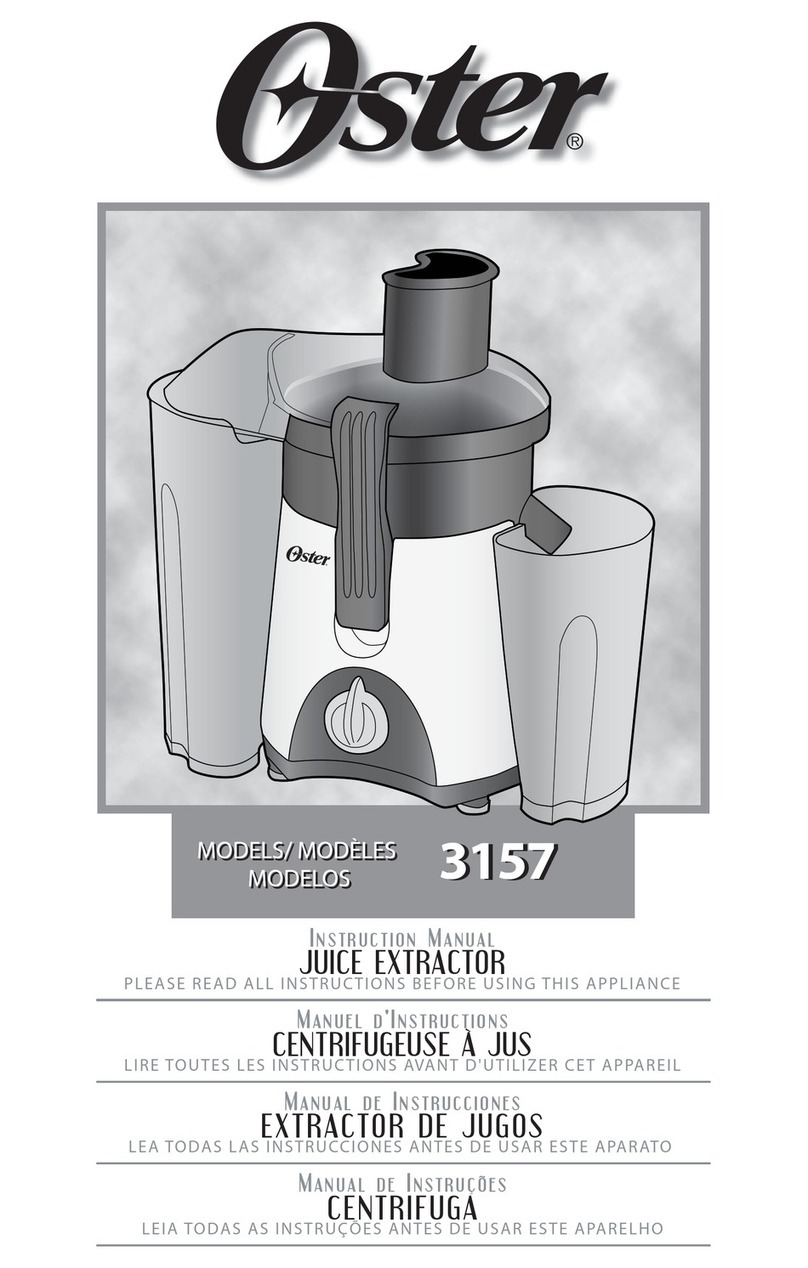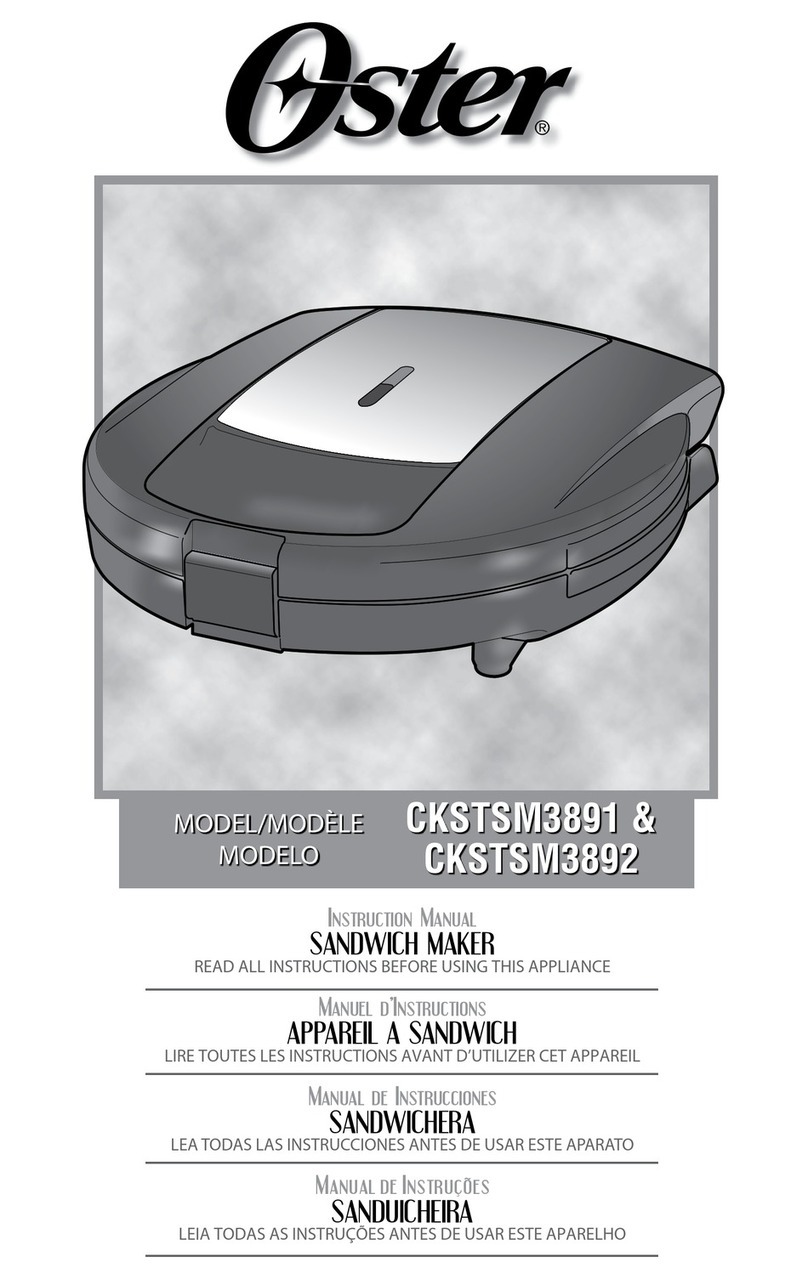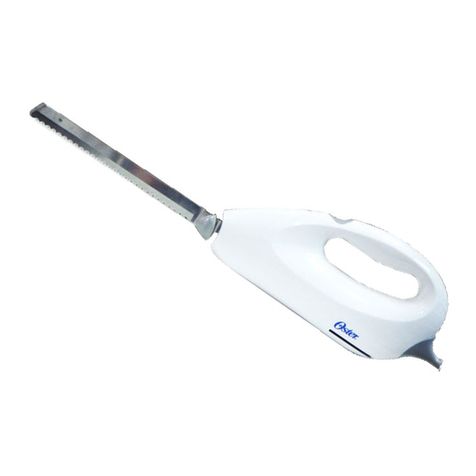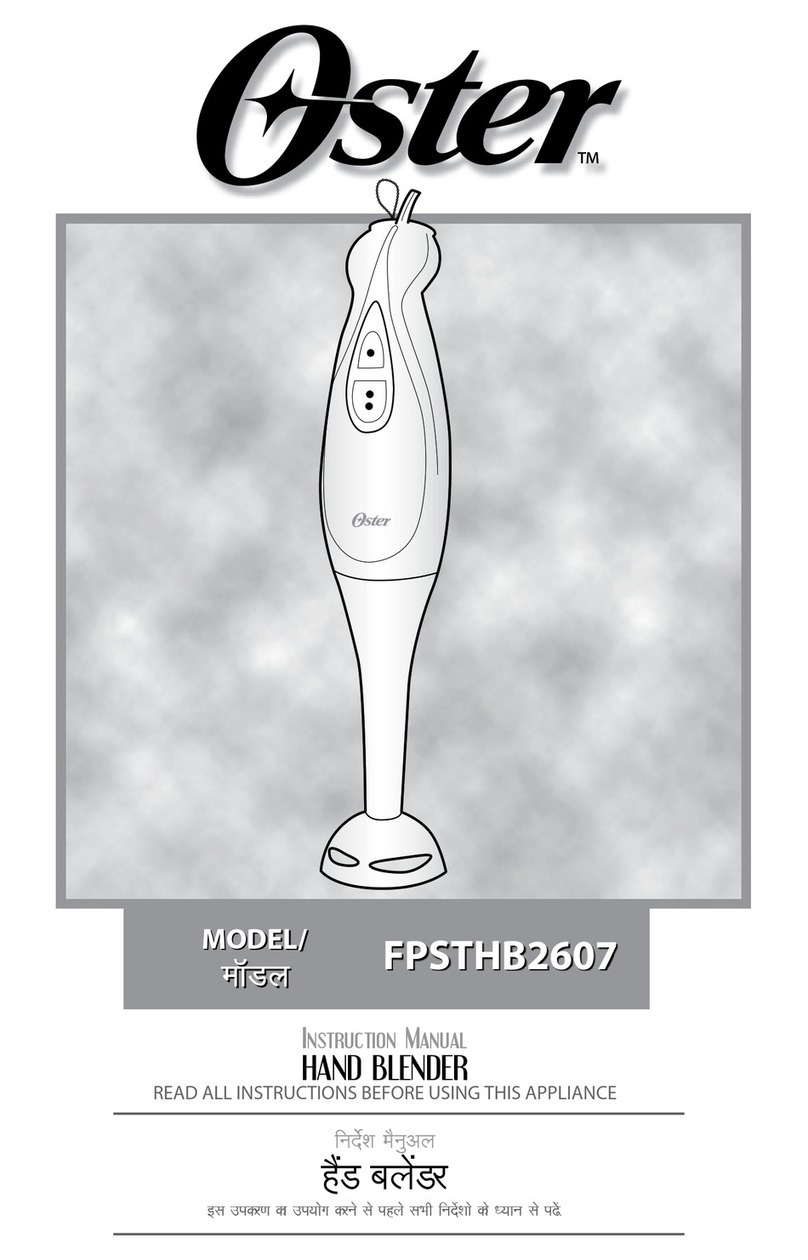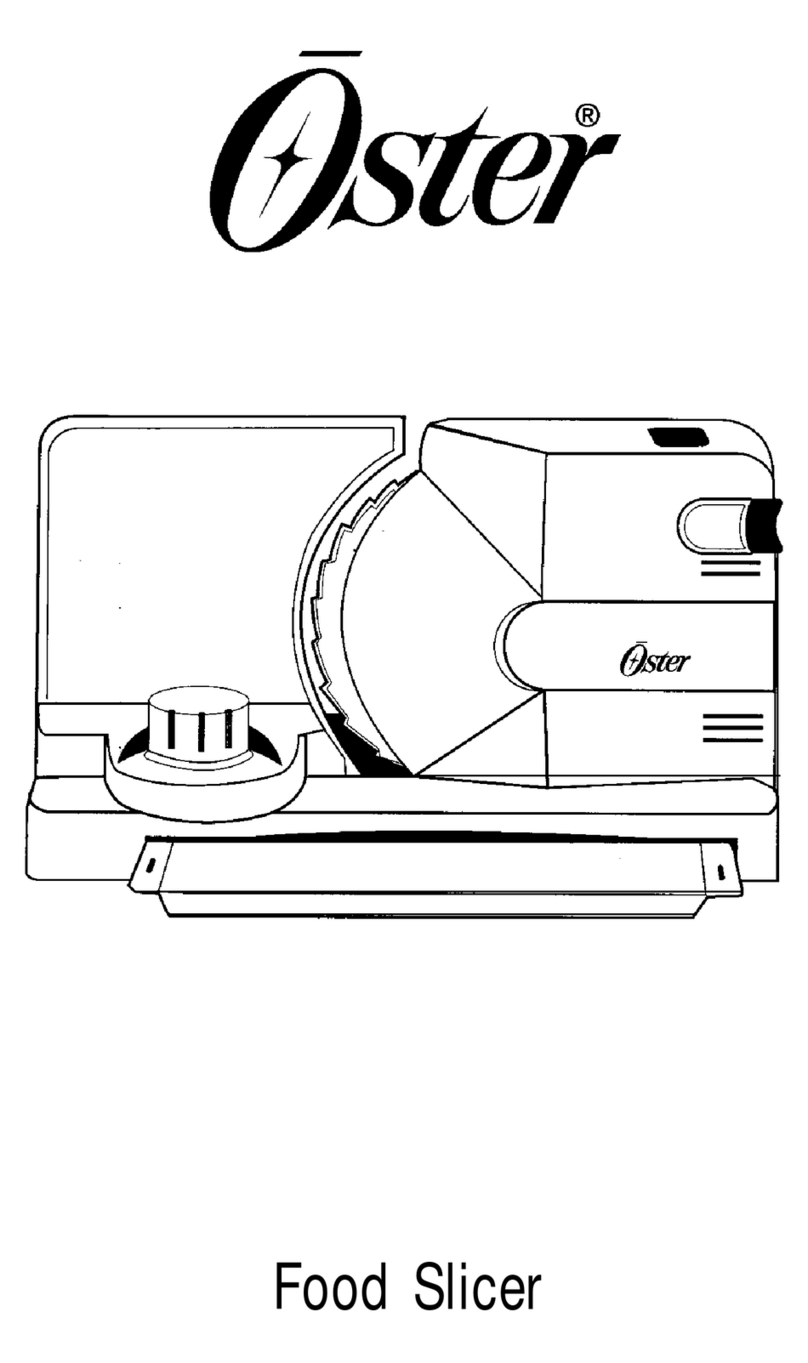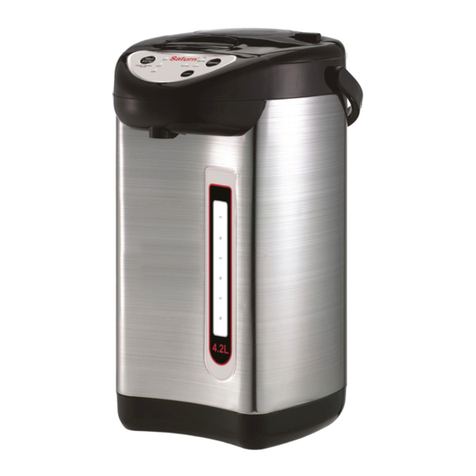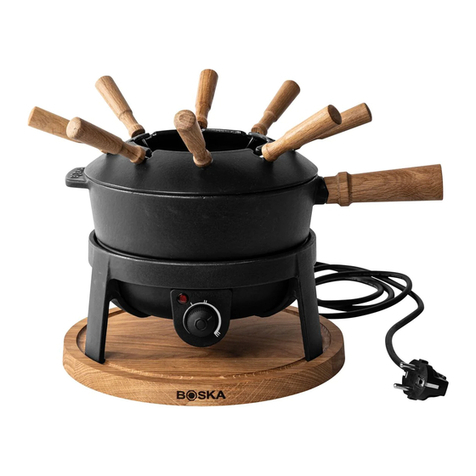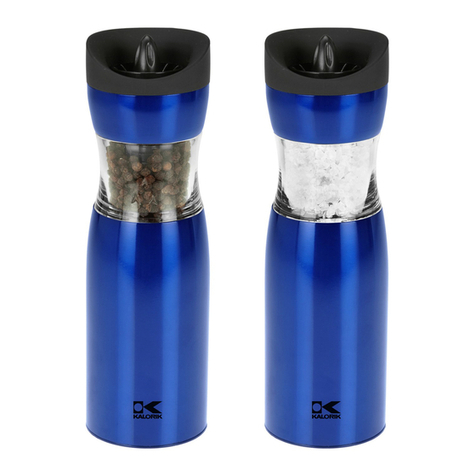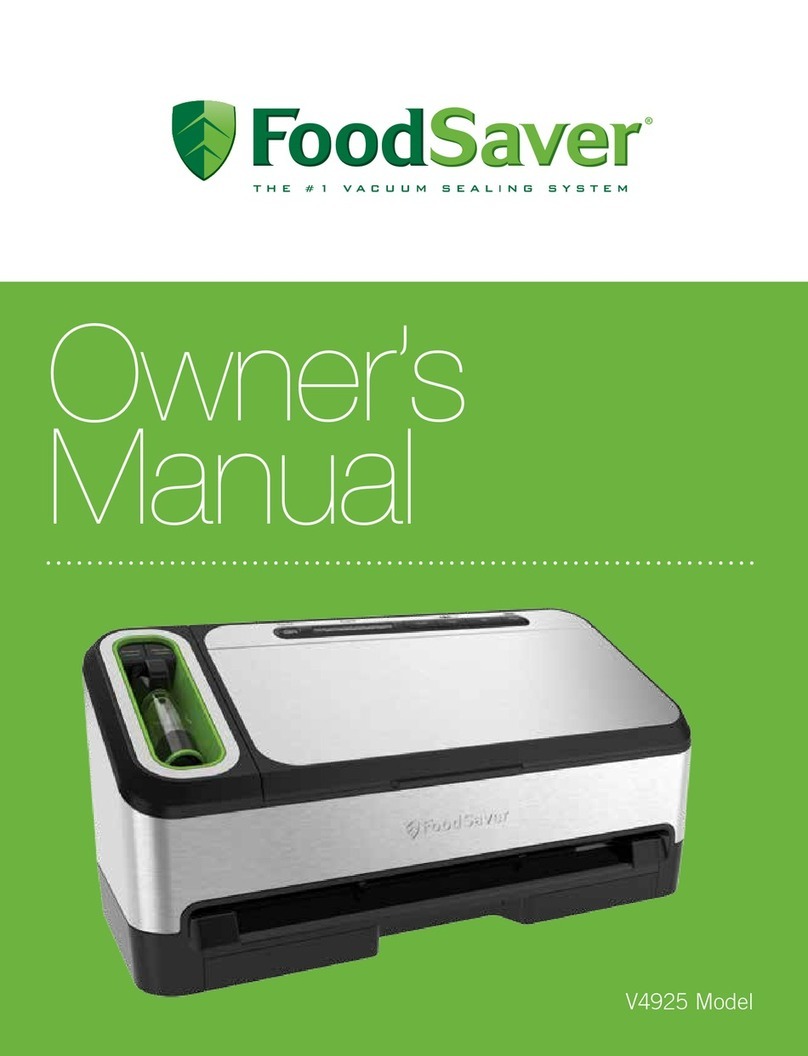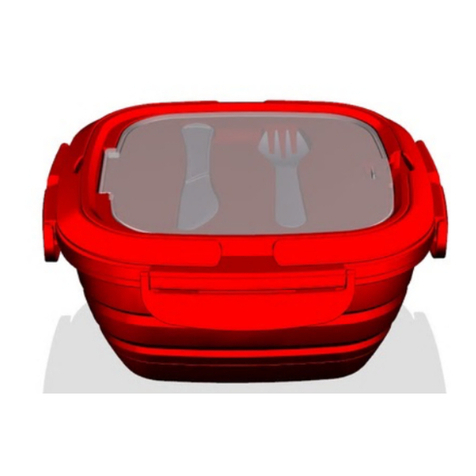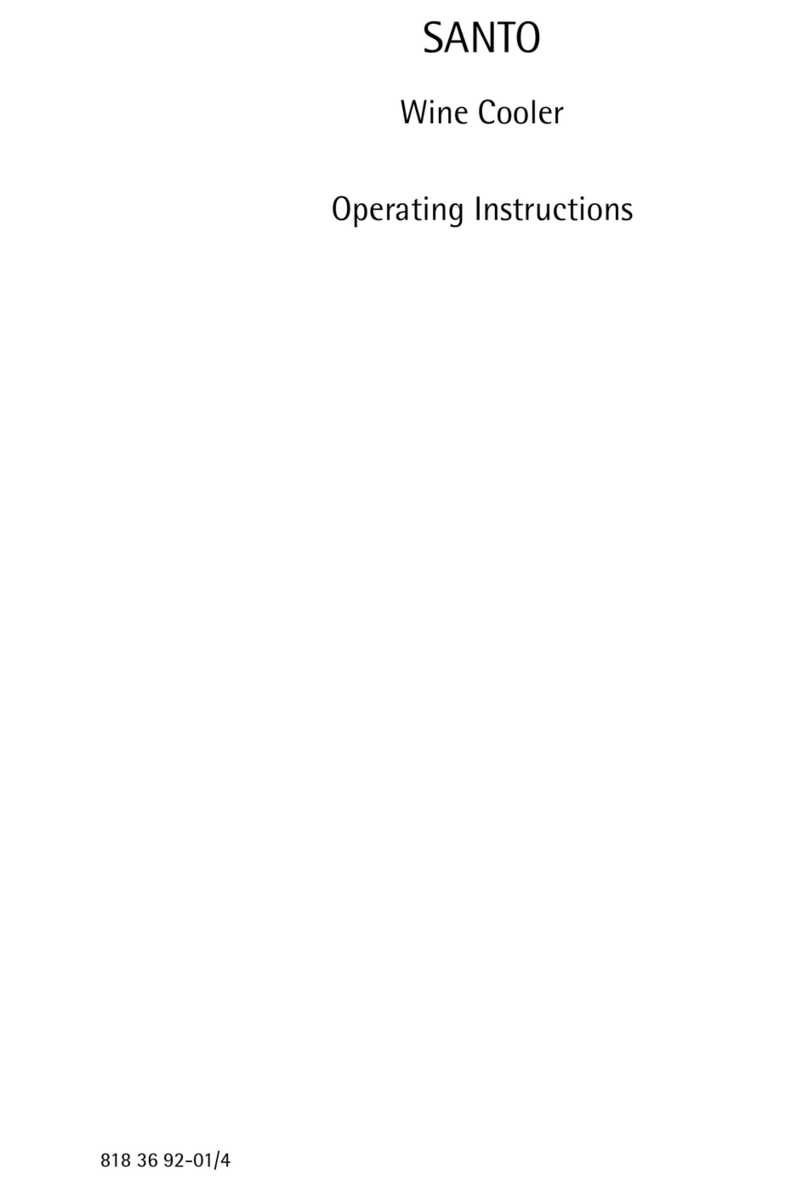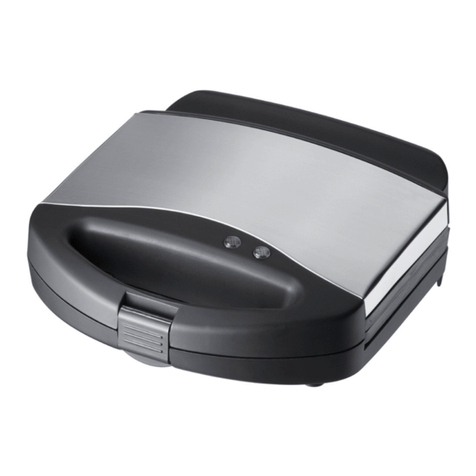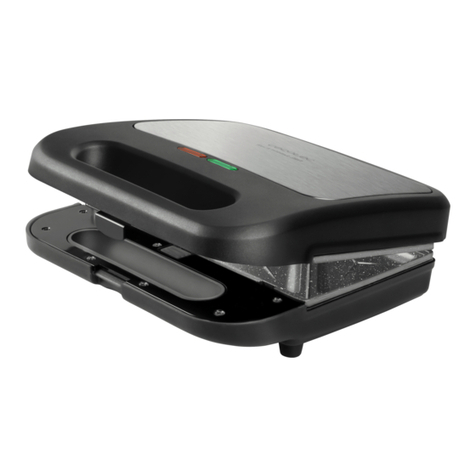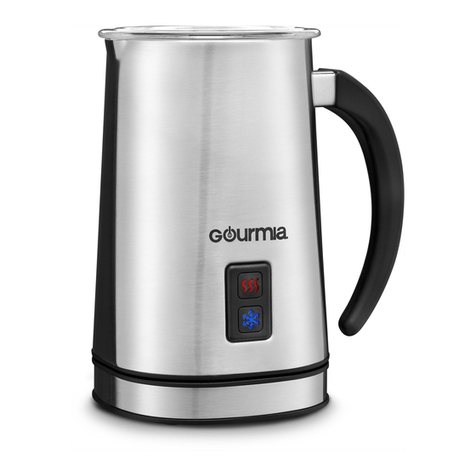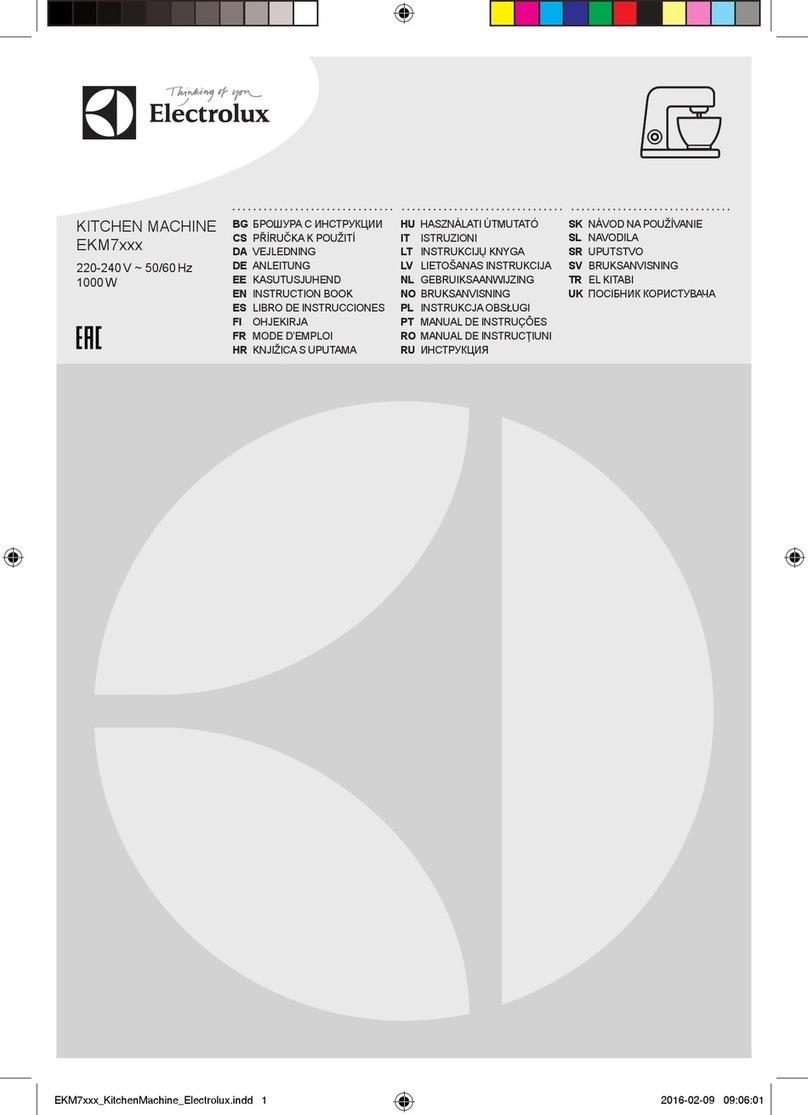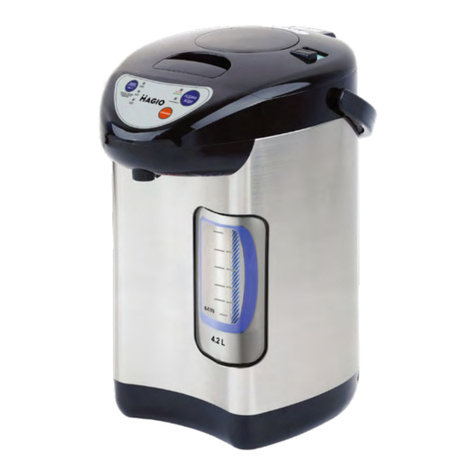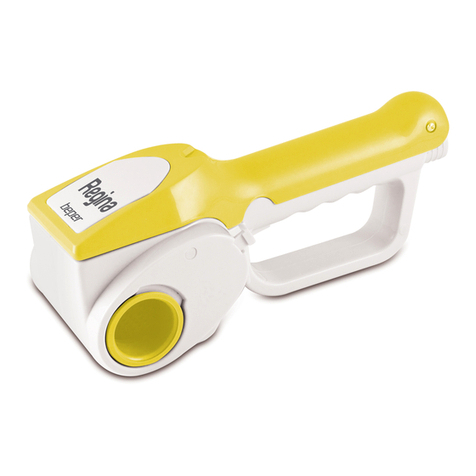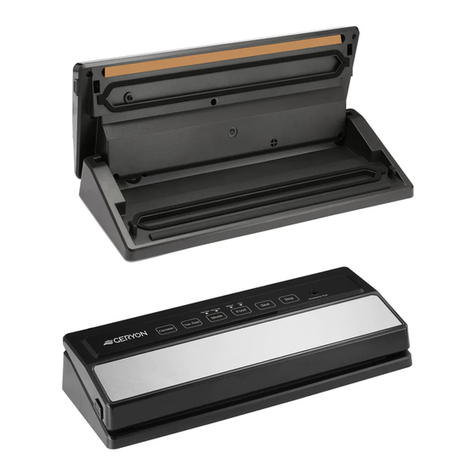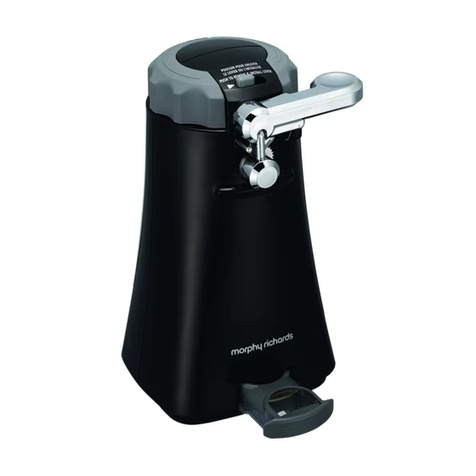NOTE: Juice Extractor should be completely assembled before use
1. Wrap cord around storage compartment, allowing sufficient length of
cord outside to reach your electrical outlet.
2. Make sure the switch is in OFF position. Then insert plug into a wall
outlet. Use only voltage specified on bottom of unit.
3. Clean fruits and vegetables thoroughly. Remove stems, large pits,
stones and seeds from apricots, grapes, plums and peaches. Apples
may be processed with peelings and seeds. Thick-skinned fruits such
as pineapple should be peeled. This will minimize collection of pulp
and improve taste of juice. All fruits and vegetables should be cut
into pieces to fit into Cover Opening.
4. Make sure that the Basket revolves properly before placing the
ingredients in the Juice Extractor. It is normal for pulp to build up
somewhat on the Cover around the Basket when moist and
leafy fruits and vegetables are juiced.
5. Turn unit on. A clicking sound is normal as the Basket begins
turning. Place food into Cover Opening slowly and steadily, using
Food Pusher. Do not force the food into the Basket.
This can cause basket to shift and result in plastic shavings
getting into the juice.
6. Select speeds as indicated in the chart on page 10.
7. Form leafy vegetables into compact balls or rolls and feed into
Cover Opening.
8. When processing moist, leafy vegetables, the area between the
basket rim and pulp storage area may become clogged. If unit
becomes clogged or vibrates excessively, switch to OFF position,
unplug cord, and allow Basket to stop completely. Simply loosen
Cover Latches, remove Cover, and push pulp into storage compart-
ment. Replace Cover and fasten with Cover Latches. You are now
ready to process another quantity of juice.
9. When juicing is completed, switch to OFF and allow Basket to stop
completely. Disconnect from wall outlet before removing parts.
10. If a very large amount of juice is being made, and the pulp storage
area becomes filled, switch to OFF position, unplug cord and allow
Basket to stop completely. Empty Pulp Container and Juice
Bowl, and reassemble. You are now ready to process another
large quantity of juice.
11. CAUTION: UNPLUG BEFORE CLEANING AND BEFORE
ASSEMBLING OR REMOVING PARTS. ALWAYS USE FOOD
PUSHER TO AVOID CUT INJURY.
